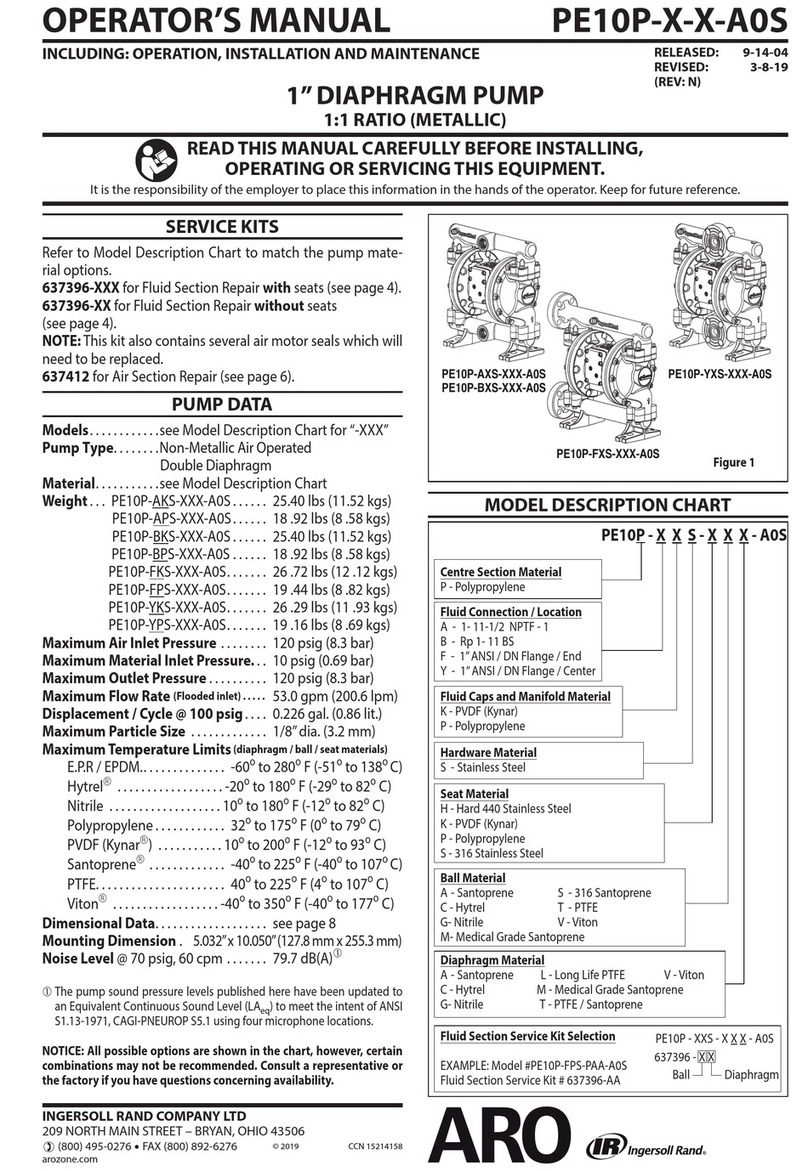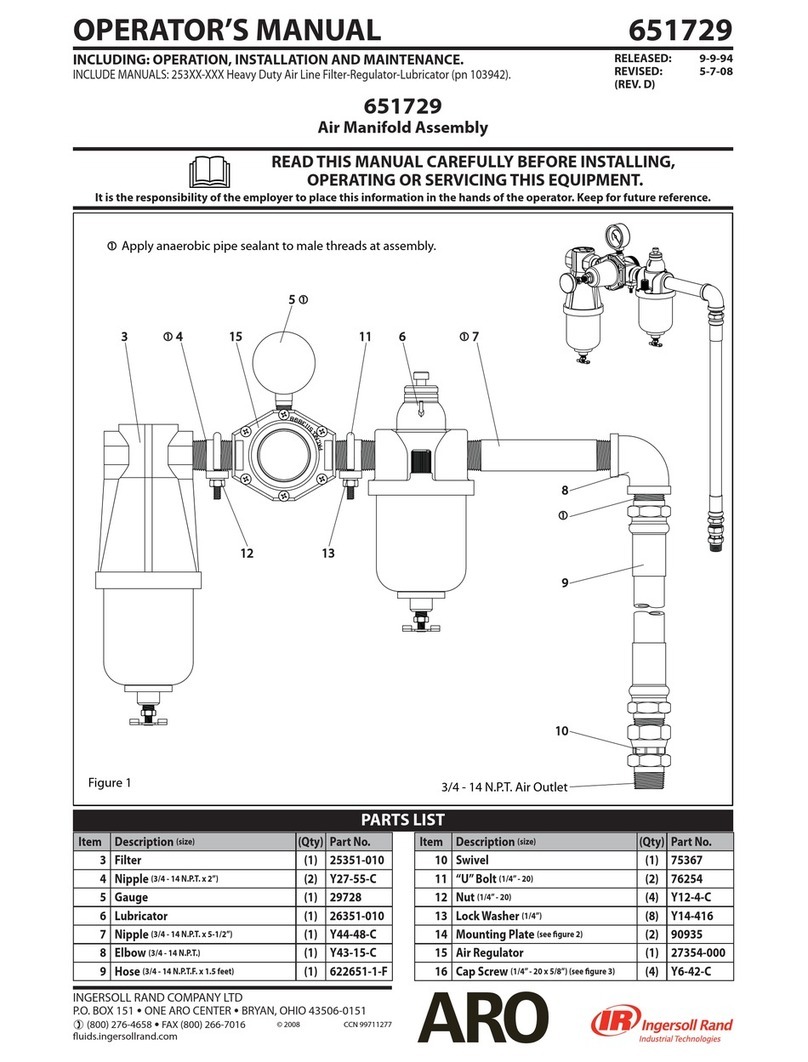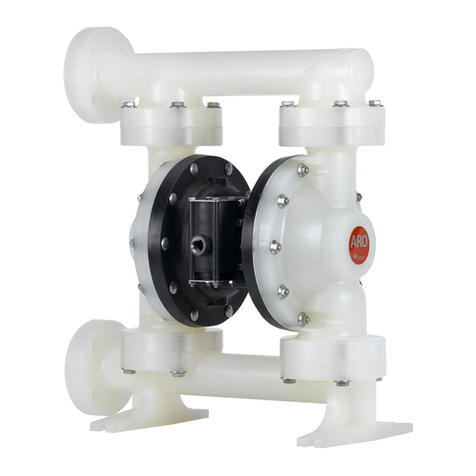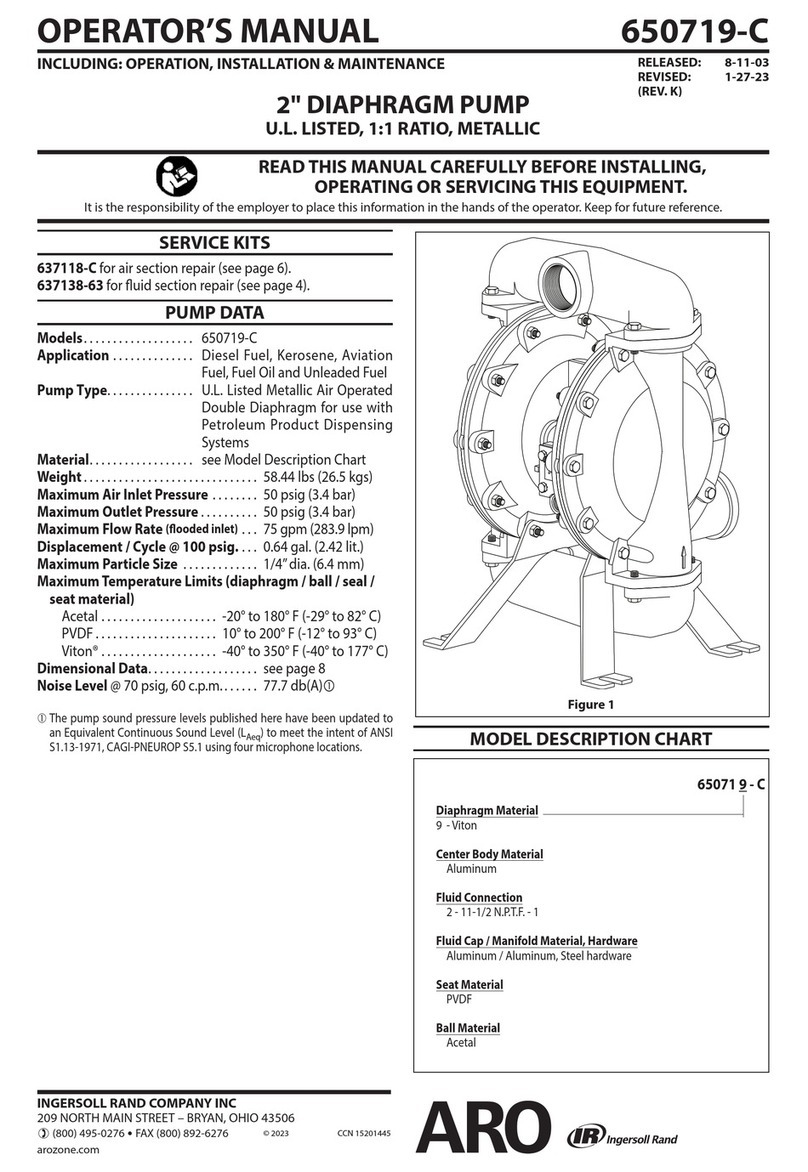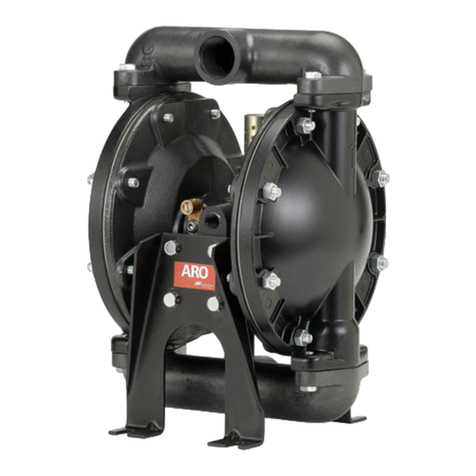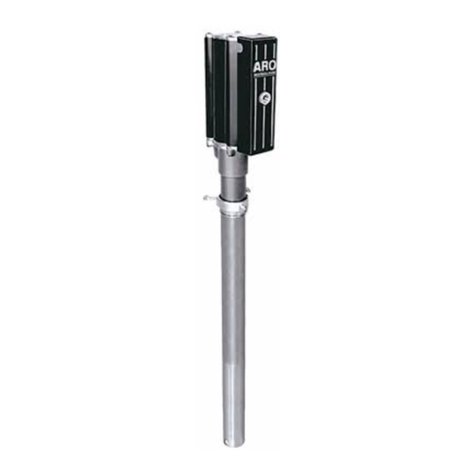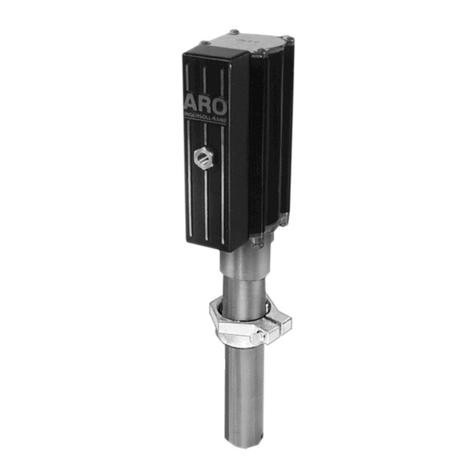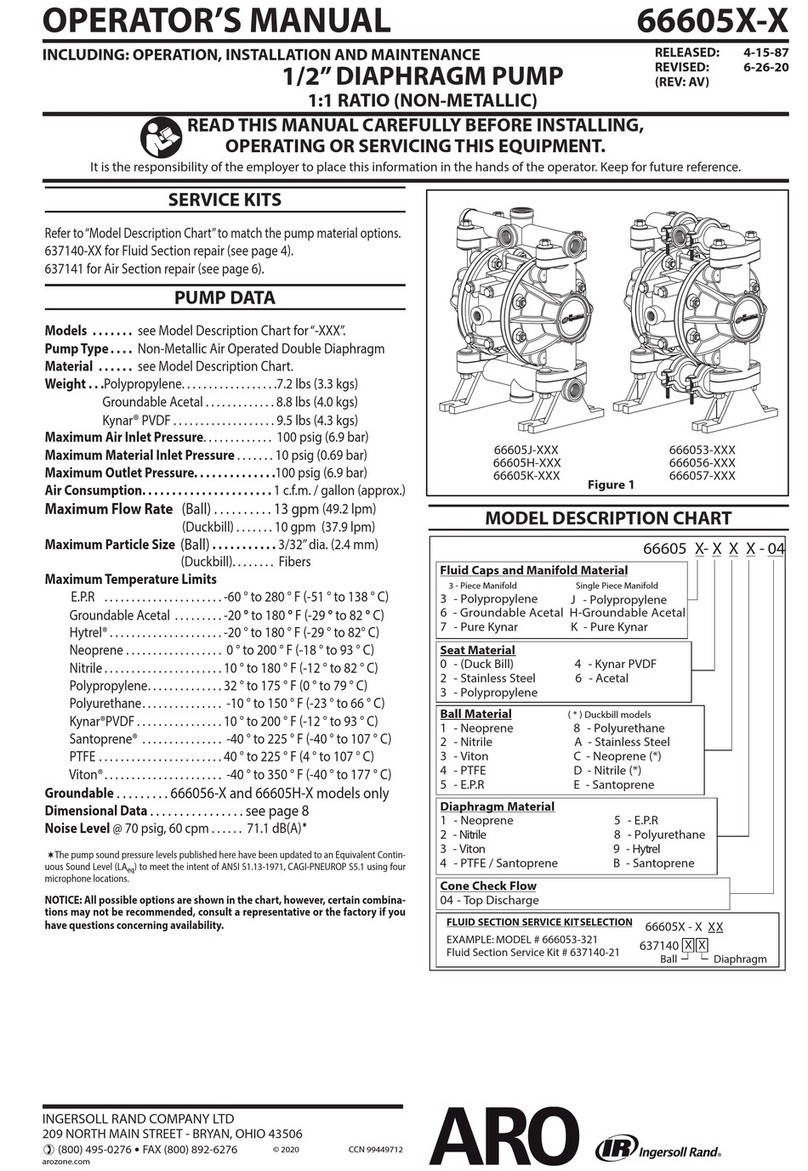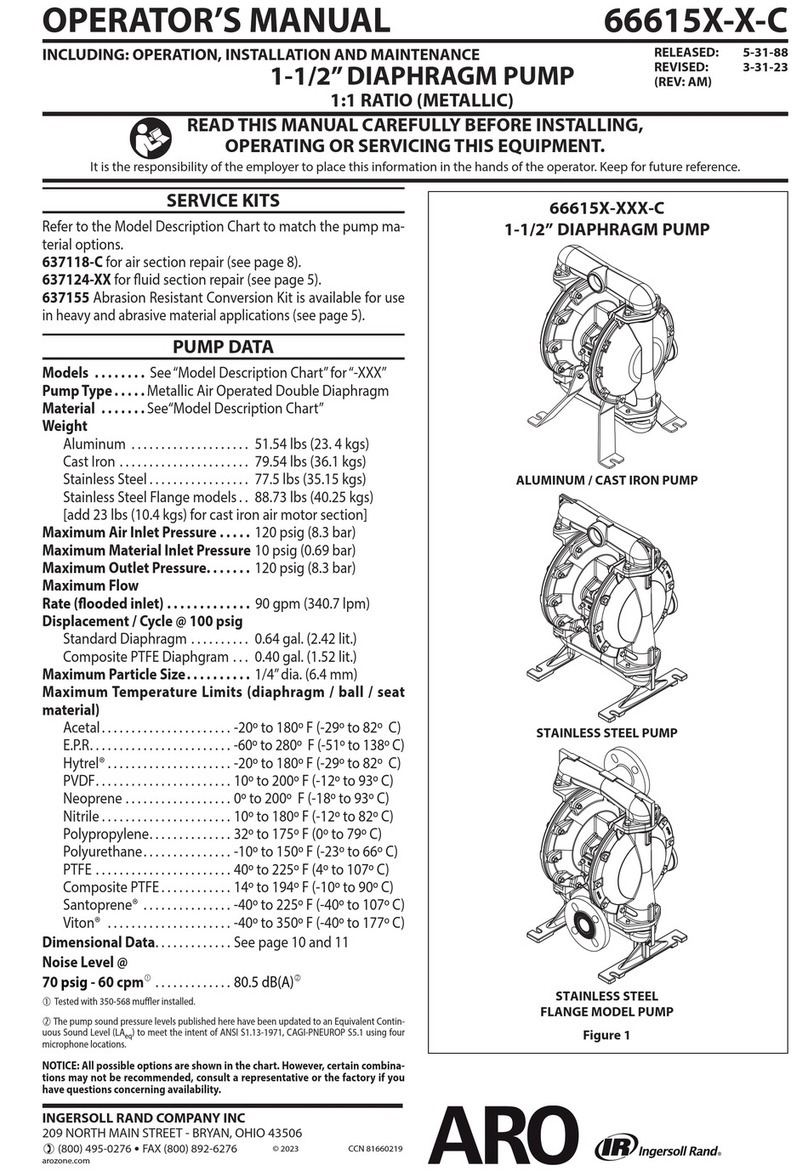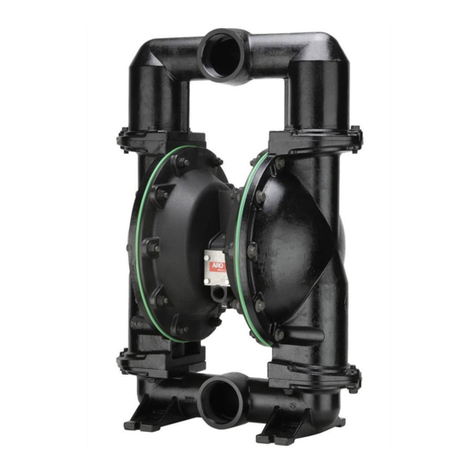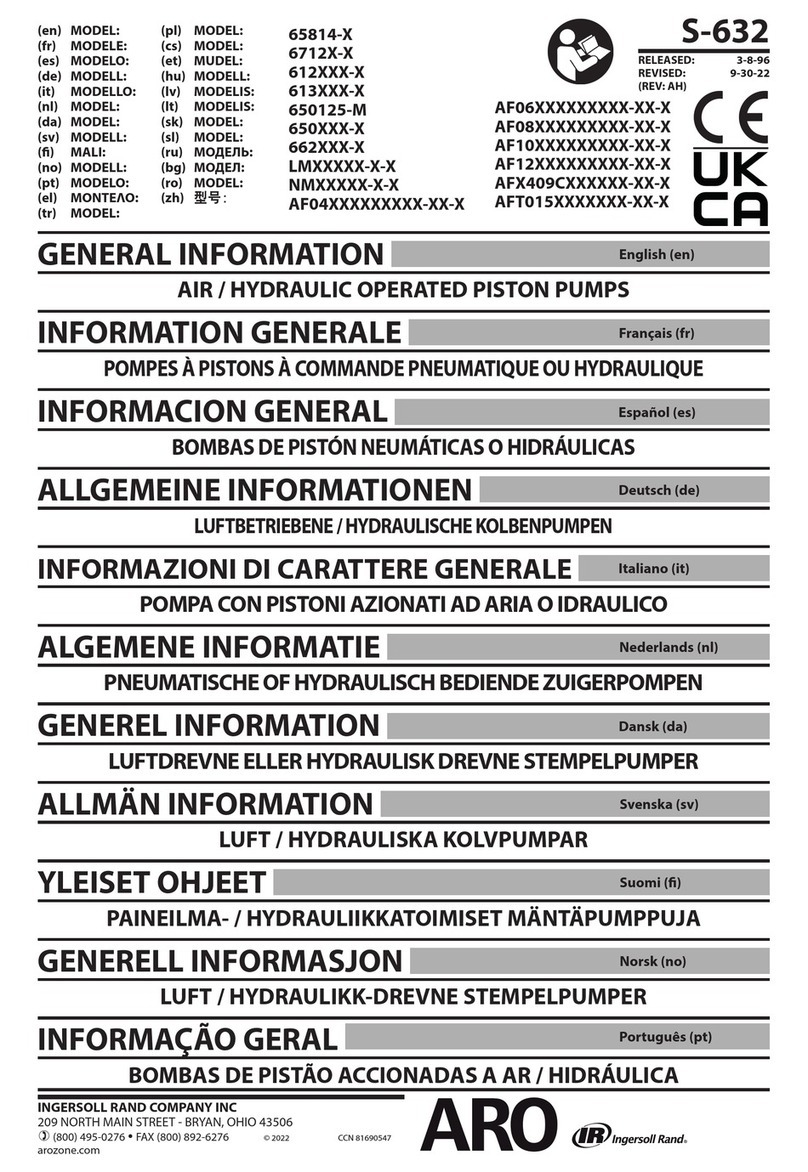
PX30R-XXX-XXX-CXXX (en) Page 3 of 12
EXCESSIVE AIR PRESSURE. Can cause personal
injury, pump damage or property damage.
yDo not exceed the maximum inlet air pressure as stated on
the pump model plate.
yBe sure material hoses and other components are able to
withstand uid pressures developed by this pump. Check
all hoses for damage or wear. Be certain dispensing device
is clean and in proper working condition.
STATIC SPARK. Can cause explosion resulting in
severe injury or death. Ground pump and pumping system.
yUse the pump grounding screw terminal provided. Use ARO®
part no. 66885-1 ground kit or connect a suitable ground wire
(12 ga. min.) to a good earth ground source.
ySecure pump, connections and all contact points to avoid
vibration and generation of contact or static spark.
yConsult local building codes and electrical codes for specif-
ic grounding requirements.
yAfter grounding, periodically verify continuity of electrical
path to ground. Test with an ohmmeter from each compo-
nent (e.g., hoses, pump, clamps, container, spray gun, etc.)
to ground to insure continuity. Ohmmeter should show 0.1
ohms or less.
ySubmerse the outlet hose end, dispensing valve or device
in the material being dispensed if possible. (Avoid free
streaming of material being dispensed.)
yUse hoses incorporating a static wire.
yUse proper ventilation.
yKeep inflammables away from heat, open flames and
sparks.
yKeep containers closed when not in use.
Pump exhaust may contain contaminants. Can
cause severe injury. Pipe exhaust away from work area and
personnel.
yIn the event of a diaphragm rupture, material can be forced
out of the air exhaust muer.
yPipe the exhaust to a safe remote location when pumping
hazardous or inammable materials.
yUse a grounded 1” minimum i.d. hose between the pump
and the muer.
HAZARDOUS PRESSURE. Can result in serious
injury or property damage. Do not service or clean pump,
hoses or dispensing valve while the system is pressurized.
yDisconnect air supply line and relieve pressure from the
system by opening dispensing valve or device and / or
carefully and slowly loosening and removing outlet hose or
piping from pump.
HAZARDOUS MATERIALS. Can cause serious in-
jury or property damage. Do not attempt to return a pump
to the factory or service center that contains hazardous
material. Safe handling practices must comply with local
and national laws and safety code requirements.
OPERATING AND SAFETY PRECAUTIONS
READ, UNDERSTAND AND FOLLOW THIS INFORMATION TO AVOID INJURY AND PROPERTY DAMAGE.
yObtain Material Safety Data Sheets on all materials from
the supplier for proper handling instructions.
EXPLOSION HAZARD. Models containing alu-
minum parts cannot be used with 1,1,1-trichloroethane,
methylene chloride or other halogenated hydrocarbon sol-
vents which may react and explode.
yCheck pump motor section, fluid caps, manifolds and all
wetted parts to assure compatibility before using with sol-
vents of this type.
MISAPPLICATION HAZARD. Do not use models
containing aluminum wetted parts with food products
for human consumption. Plated parts can contain trace
amounts of lead.
Verify the chemical compatibility of the pump
wetted parts and the substance being pumped, ushed or
recirculated. Chemical compatibility may change with tem-
perature and concentration of the chemical(s) within the
substances being pumped, ushed or circulated. For specif-
ic uid compatibility, consult the chemical manufacturer.
Maximum temperatures are based on mechan-
ical stress only. Certain chemicals will signicantly reduce
maximum safe operating temperature. Consult the chemi-
cal manufacturer for chemical compatibility and tempera-
ture limits. Refer to PUMP DATA on page 1 of this manual.
Be certain all operators of this equipment have
been trained for safe working practices, understand it’s
limitations, and wear safety goggles / equipment when re-
quired.
Do not use the pump for the structural support
of the piping system. Be certain the system components are
properly supported to prevent stress on the pump parts.
ySuction and discharge connections should be flexible
connections (such as hose), not rigid piped, and should be
compatible with the substance being pumped.
Prevent unnecessary damage to the pump. Do
not allow pump to operate when out of material for long
periods of time.
yDisconnect air line from pump when system sits idle for
long periods of time.
Use only genuine ARO replacement parts to as-
sure compatible pressure rating and longest service life.
Replacement warning labels are available upon
request: “Static Spark & Diaphragm Rupture” pn \ 94080.
= Hazards or unsafe practices which
could result in severe personal injury,
death or substantial property damage.
= Hazards or unsafe practices which
could result in minor personal injury,
product or property damage.
= Important installation, operation or
maintenance information.
EXCESSIVE AIR PRESSURE
STATIC SPARK
HAZARDOUS MATERIALS
HAZARDOUS PRESSURE

